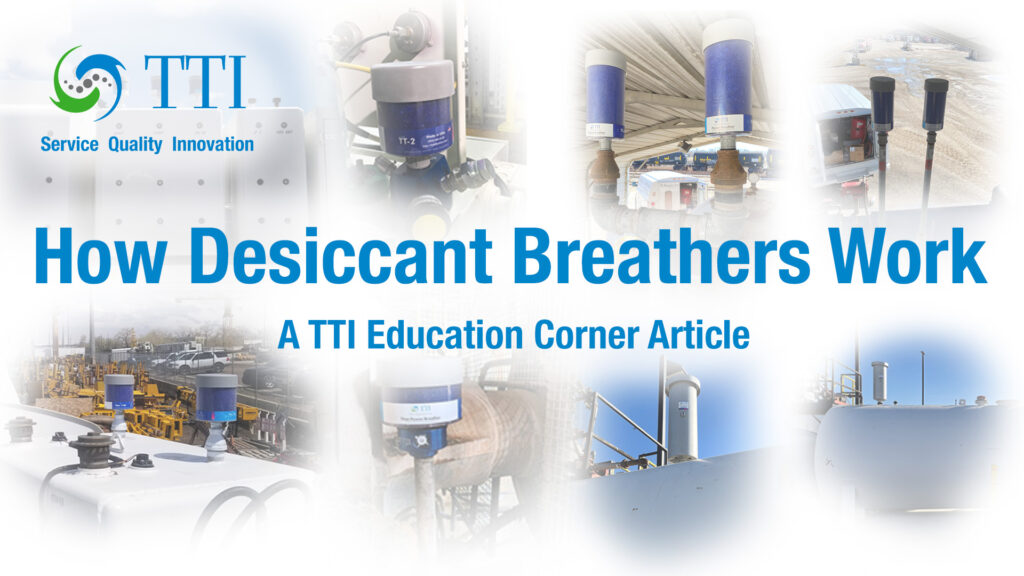
A large percent of equipment is lost to harmful contamination. Whether or not you’re working in harsh environments, humidity levels, and dusty conditions can do some serious damage. Desiccant breathers eliminate moisture, dirt, and other types of particulate contamination from the air which enters various types of equipment and machinery, including fluid reservoirs, hydraulic and lubrication storage tanks, and gearboxes. Whether you work with mining equipment, construction vehicles, or something completely different, it’s important to protect your equipment from moisture.
These breathers are multi-tiered and are installed on equipment to stop any entrance of particles and provide protection from moisture. Equipment such as pumps, gearboxes, and reservoirs must be able to breathe when the air expands in the headspace and then contracts when the temperature and/or oil levels change. At Todd Technologies Inc. (TTI), we provide cost effective desiccant breather technology, for a variety of industries, designed to protect your machinery from harmful moisture and other contaminants.
Every time air travels into equipment, moisture, dirt, and other harmful particles enter, causing the contamination of lubricants and degrading equipment over time. Much of the lubricant used in machinery is contaminated by outside particles coming into the machine which is why preventing the entrance of the contaminants is so important. This is why this technology is an ideal solution.
There is a wide range of designs and configurations to desiccant breathers. Some of these units operate via a three-stage design process that keeps the internals of equipment dry and cleanliness levels optimal. In this process, a solid particle filter, a container of silica gel beads, and another quality filter cleans and dehydrates the incoming air.
Generally, the technology operates as follows:
As the machine breathes, the outside air containing contaminants flows into the desiccant breather and travels through the initial solid particle filter. This filter typically provides basic protection and captures particles equal to or greater than 1 micron in size. Then, the silica gel desiccant removes water vapor from the air, effectively dehydrating it. Lastly, the outside air moves through the final solid particle filter at the bottom of the desiccant breather without dust particles or other contaminants, even in the toughest environments.
During the exhale process of the machine, the air moves in the reverse direction through the desiccant breather, or depending on the design of the breather, it may purge directly into the atmosphere. The silica gel is a color-indicating desiccant. It changes colors as it becomes absorbed with moisture. This color change indicates that the silica gel granules are hydrated and it is time for the filter to be replaced.
Breathers help to prevent production downtime. Unplanned downtime can be costly, and utilizing the available technology for additional protection from all amounts of contamination will help to avoid machinery repair costs and ensure continuous operation throughout the entirety of a project.
TTI offers an array of desiccant breathers in a wide variety of sizes. To learn about the benefits of desiccant breathers in all types of operating environments, give our team a call today at 303-585-0132, or use our contact form to leave us a message and learn about the longest-lasting breathers on the market.